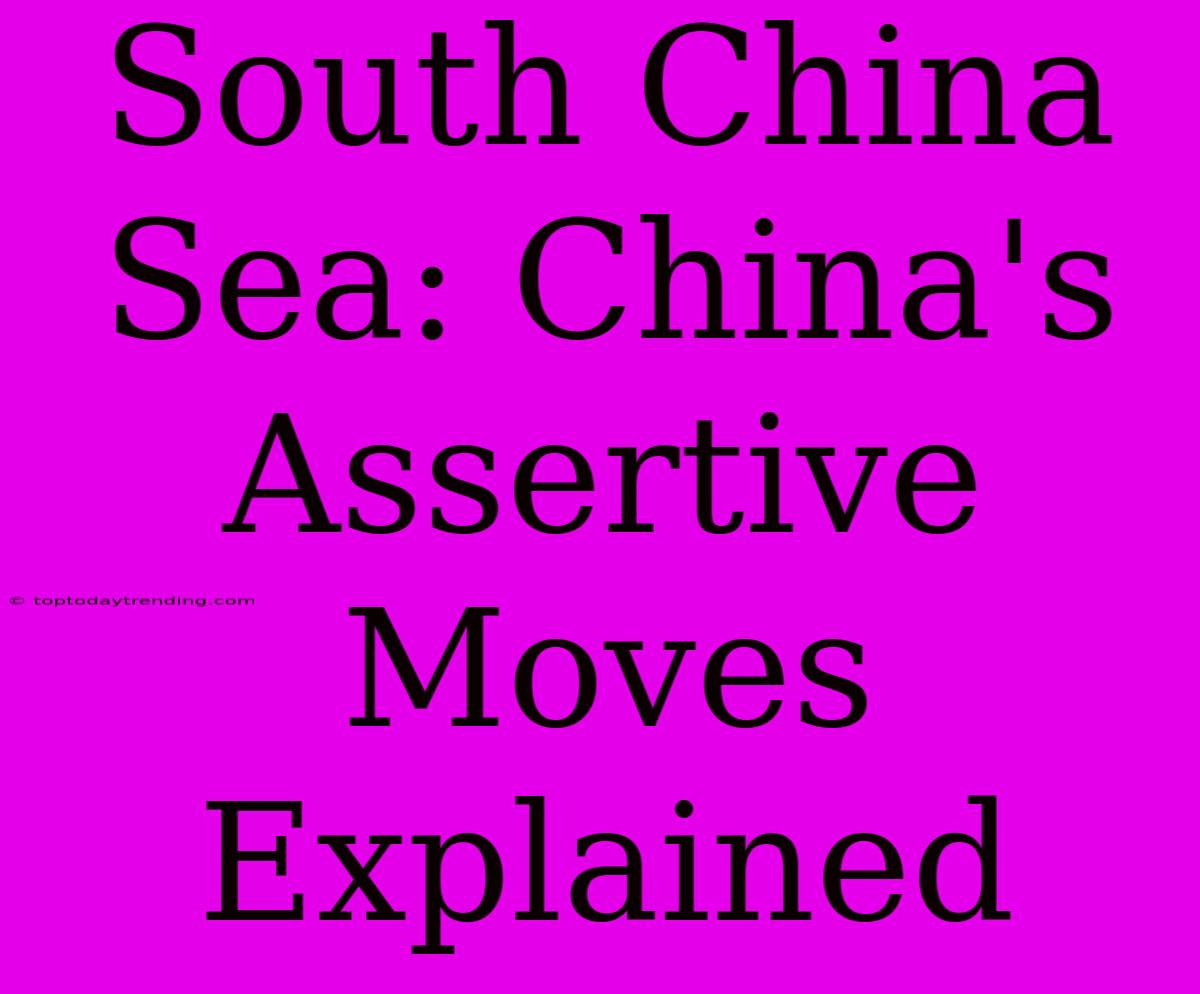South China Sea: China's Assertive Moves Explained
The South China Sea (SCS) has become a focal point of geopolitical tension, with China's assertive actions in the region sparking widespread concern and international scrutiny. Understanding the complexities of this issue requires delving into the historical, political, and economic factors at play.
Historical Claims and the "Nine-Dash Line"
China's claims to sovereignty over most of the SCS date back centuries, with historical records referencing Chinese fishermen and explorers traversing the region. However, these claims solidified in the 20th century, with the establishment of the "Nine-Dash Line" on maps, a line encompassing nearly the entire sea. This line, first appearing in 1947, has become a symbol of China's territorial ambitions and a source of contention with neighboring nations.
Strategic Importance of the SCS
The SCS is a strategically vital waterway for multiple reasons. It holds significant oil and gas reserves, is a major shipping route for global trade, and provides access to crucial fishing grounds. Control of the SCS would grant a country immense economic and military advantages, including:
- Control over vital shipping lanes: The SCS is a critical passage for global trade, with billions of dollars in goods passing through it annually.
- Access to abundant resources: The region boasts considerable oil and gas reserves, estimated to be worth trillions of dollars.
- Military dominance: The SCS offers strategic advantages for naval forces, including the ability to project power throughout the region.
China's Actions and International Reactions
China's actions in the SCS have escalated in recent years. This includes:
- Construction of artificial islands: China has built artificial islands on disputed reefs and shoals, installing military infrastructure and airstrips, effectively expanding its presence and control over the region.
- Military exercises: China has conducted frequent military drills in the SCS, demonstrating its growing naval power and assertiveness.
- Increased maritime patrols: China has stepped up patrols in the SCS, challenging the presence of other nations and asserting its sovereignty over the region.
These actions have drawn strong condemnation from neighboring countries and international partners, including:
- Philippines, Vietnam, Malaysia, Brunei, and Taiwan: These countries have competing territorial claims in the SCS and are concerned about China's growing influence.
- United States: The U.S. has conducted freedom of navigation operations in the SCS, challenging China's claims and demonstrating its commitment to maintaining open maritime access.
- Other regional powers: Countries like Japan and India have voiced concerns about China's actions and have strengthened their military presence in the region.
Implications and Future Prospects
The South China Sea dispute is a complex issue with far-reaching implications.
Economic consequences: The ongoing tension could disrupt global trade and investment flows, jeopardizing economic growth and stability in the region and beyond.
Security risks: Increased military activity and the potential for miscalculation could lead to unintended conflicts, escalating the situation into a regional crisis.
International relations: The SCS dispute is straining diplomatic relations between China and its neighbors, and exacerbating existing geopolitical rivalries.
Future prospects: The SCS dispute remains unresolved and will likely continue to be a source of tension in the foreseeable future.
Finding a peaceful and sustainable solution will require dialogue, diplomacy, and a commitment to international law.

